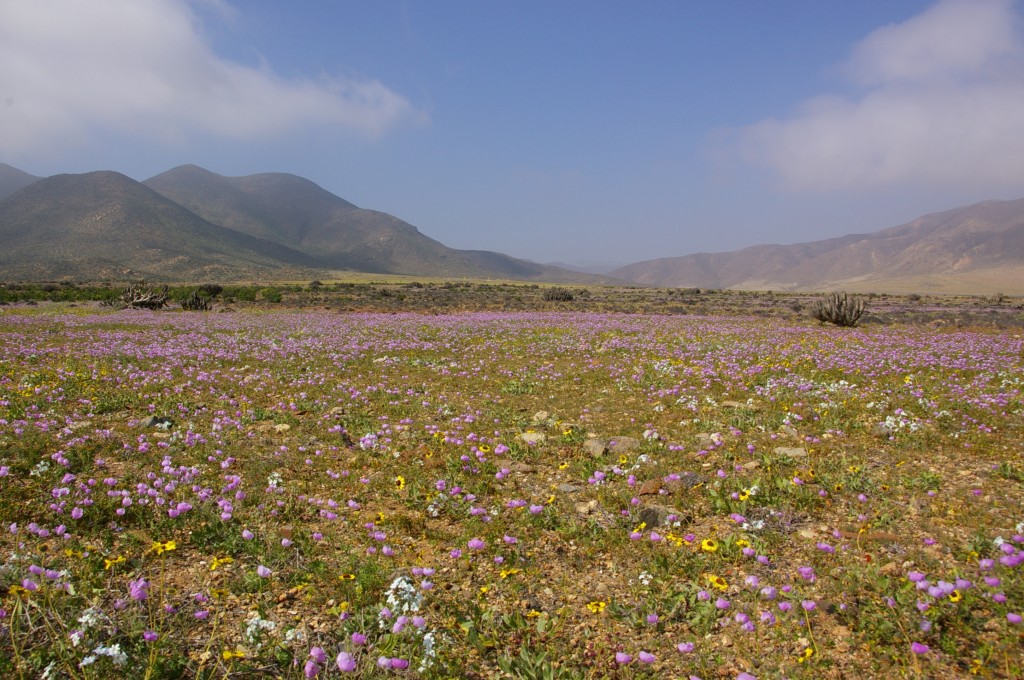
“Desierto florido” by Simon Gascoin, distributed by the European Geosciences Union under a Creative Commons license.
The Atacama desert in Chile is one of the driest regions in the world. Rain has never been recorded in parts of the desert and the average rainfall is typically one milimetre per year or less (for comparison, the average annual precipitation in Munich, where the EGU Executive Office is located, is over 960 millimetres). However, every five years or so, rare bouts of local rainfall are triggered by the El Niño climate pattern, with truly exceptional consequences: flowers bloom.
Simon Gascoin, a researcher at the Center for the Study of the Biosphere from Space (CESBIO) in Toulouse, France, was in the Atacama at a time when carpets of flowers painted the usually bare and sandy ground with stunning pink and yellow colours. “This picture was taken in August 2010 in Llanos de Challe National Park near the Pacific coast of Chile. We spent the weekend in this area with family and friends of the CEAZA, the Center for Advanced Studies in Arid Regions.”
While 2010 saw enough rainfall to allow some flowers to bloom, it wasn’t a particularly exceptional year in the Atacama. The following year, however, was unusually wet – this time due to the La Niña phenomenon – with more than 50 millimetres of precipitation. As a result, numerous species of flowers and plants, whose bulbs and rhizomes had laid dormant in the bare soil for years, grew in the desert in 2011. “The last time there were so many flowers was in 1989,” Padre Lucio, an amateur botanist and priest in an Atacama town said to AFP. “There have been desert blooms since then, but never like this one.”
Imaggeo is the EGU’s online open access geosciences image repository. All geoscientists (and others) can submit their images to this repository and since it is open access, these photos can be used by scientists for their presentations or publications as well as by the press and public for educational purposes and otherwise. If you submit your images to Imaggeo, you retain full rights of use, since they are licensed and distributed by the EGU under a Creative Commons licence.
